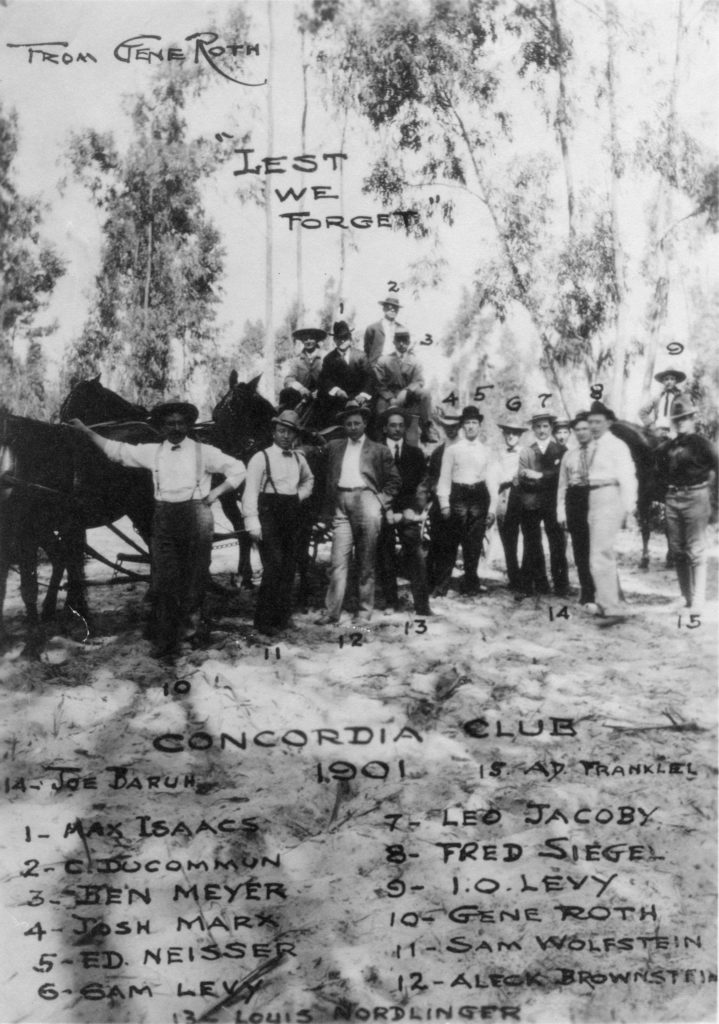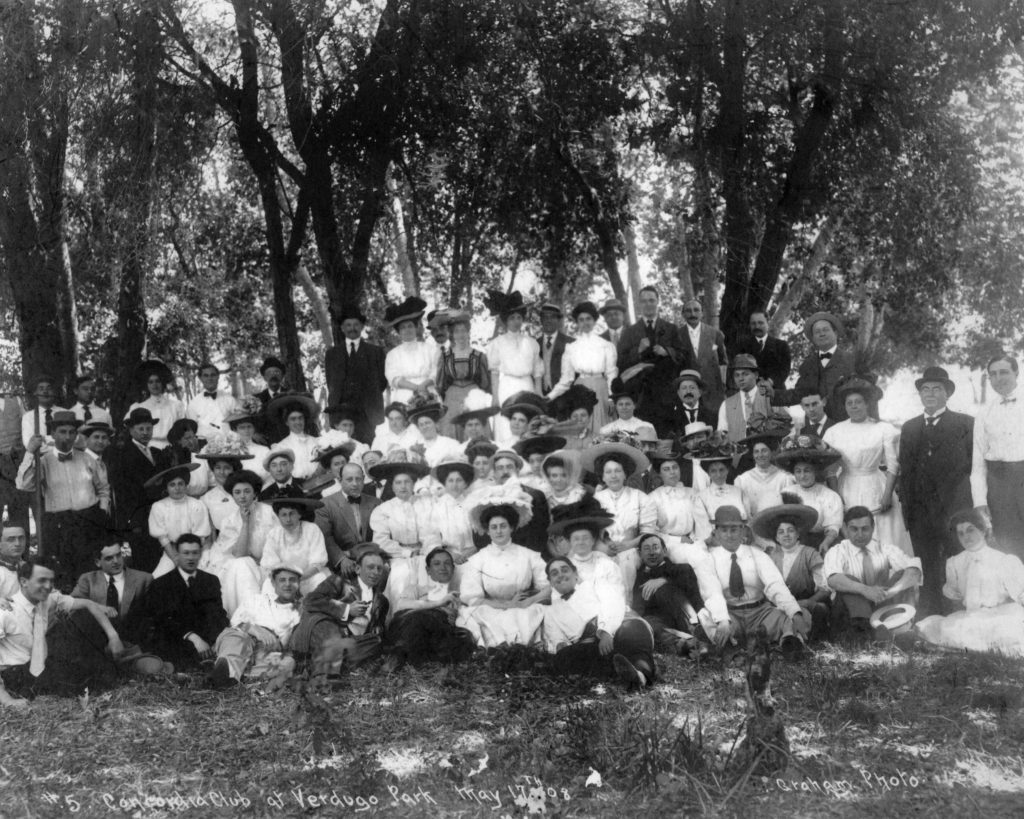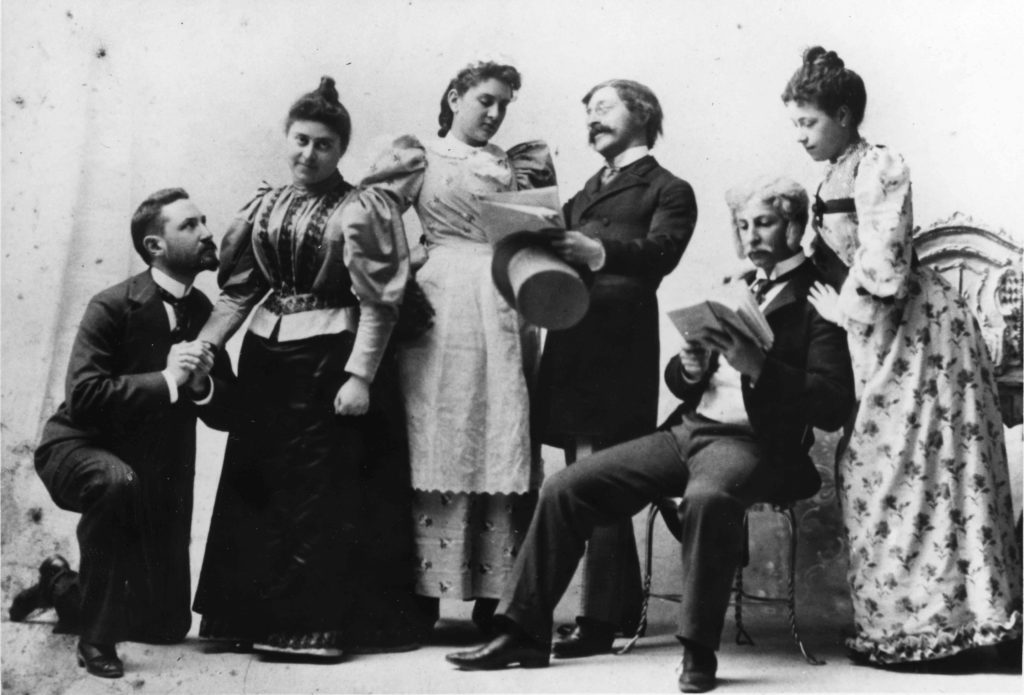Concordia Club of Los Angeles, 1891-1915
In May 1891, the Concordia Club of Los Angeles was incorporated for the “social and mental culture” of its Jewish membership.
The club quickly attracted one hundred members, drawn from the city’s most prosperous, and mostly “German,” Jewish families.
Meetings were held at the former Elks Club, where billiard tables were installed and dances took place.
By 1894, the club secured rented quarters at the luxurious Burbank Theater Building on Main Street, complete with a large ballroom, reading room, card room, and banquet hall.
The club’s exclusiveness was touted in a Los Angeles Times write-up from November 8, 1897:“With the growth of Los Angeles as a metropolis, has come a demand for social clubs, as are found in all large cities. No social club will be a thorough success which accepts anyone as a member who merely dresses decently and is able to pay the dues….No person should be admitted as a member of the club whom the average member would refuse to admit as a guest in his home…Only such clubs as are exclusive in regard to the character of the members, can expect to be permanently prosperous.”
This elitist attitude was coupled with a policy of exclusion, which limited membership to families of those who had joined in the early years.
Beginning in 1902, the club had its own building on Figueroa Boulevard, which, according to the History of the Jews of Los Angeles (1970), by Max Vorspan and Lloyd P. Gartner, became the “inner sanctum of high Jewish society.”
Club Activities
The Concordia Club’s eclectic affairs included decadent dinner parties, Purim costume balls, elaborate picnics, dramatic presentations, and extravagant Christmas parties, accompanied by large decorated trees—as much a celebration of the members’ German heritage as of the holiday itself.The Christmas festivities signaled that, while the membership was Jewish, it was not a parochial or pious association. Many members had no other Jewish affiliations.
The photograph below is from Sydney Rosenfeld’s one-act comedic play, Off the Stage, performed by Concordia Club members on Thursday evening, February 2, 1894.
The cast, all second-generation Angelinos, is pictured from left to right: Dr. David W. Edelman, the first Los Angeles-born Jewish doctor and son of Abraham Edelman, founding rabbi of Congregation B’nai B’rith (today’s Wilshire Boulevard Temple); Mrs. Agnes Kremer, daughter of Matilda Newmark and French-born businessman and civil servant Maurice Kremer; Florence Levanthal, daughter of one of the city’s first Jewish settlers; Ralph A. Levy, son and later partner of liquor businessman Michel Levy; Daniel J. Brownstein, son of Lena Newmark (sister-in-law of Kaspare Cohn), who co-founded the city’s first sportswear manufacturing business; and Ernestine Doychert, in whose name a scholarship for women medical students was established at the University of California (Berkeley).Hillcrest Country Club
The Los Angeles Concordia Club was active until around 1915.
In 1920, Rabbi Edgar Magnin of Congregation B’nai B’rith led a well-heeled group in forming Hillcrest Country Club, which soon acquired a 142-acre plot near Beverly Hills.
Early membership largely comprised the same prominent families that controlled the Concordia Club, including the Newmarks and Hellmans. In Magnin’s words, Hillcrest was for “the aristocrats and Jewish big shots at the time.”
Hillcrest’s complexion gradually changed with the emergence of the Hollywood film industry, influx of mostly Eastern European Jews, Great Depression, and virulent antisemitism that infected Los Angeles in the 1930s.
As Neal Gabler notes in An Empire of Their Own: How the Jews Invented Hollywood (1988):
“At Hillcrest the movie Jews and the German Jews who had originally ostracized them found they had more in common than wealth. They had their Judaism. They had their enemies. And they had their fear.”
Sources
- Norton B. Stern, “The Concordia Club: Presenting Drama, Los Angeles, California, February 2, 1894,” Western States Jewish History 41/3.
- Max Vorspan and Lloyd P. Gartner, History of the Jews of Los Angeles (San Marino, CA: The Huntington Library, 1970).
- Neal Gabler, An Empire of Their Own: How the Jews Invented Hollywood (New York: Crown, 1988).
Jonathan Friedmann is curator for this Concordia Club exhibit.



